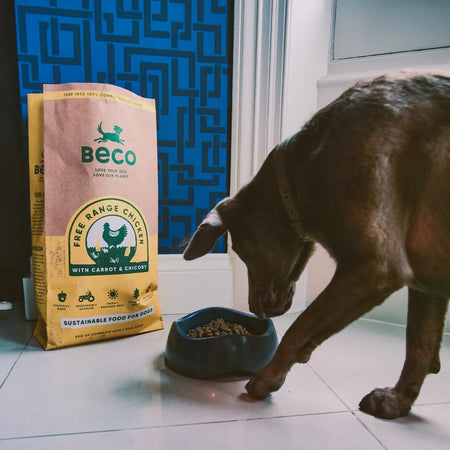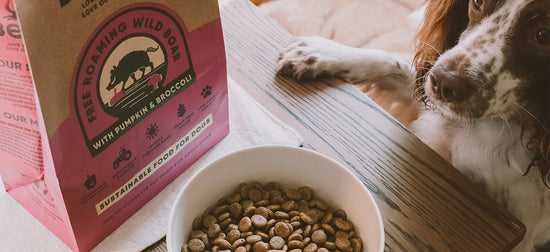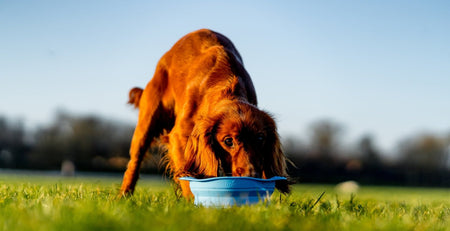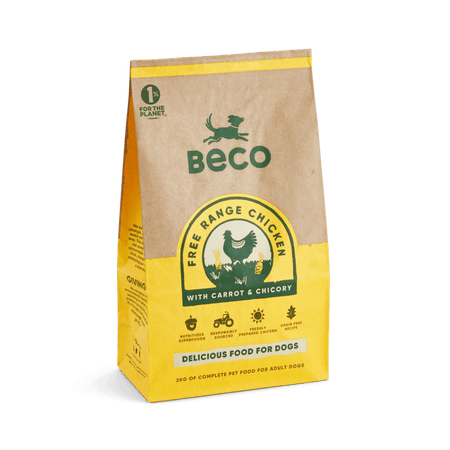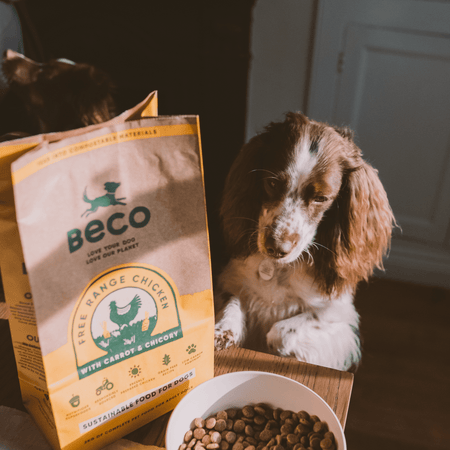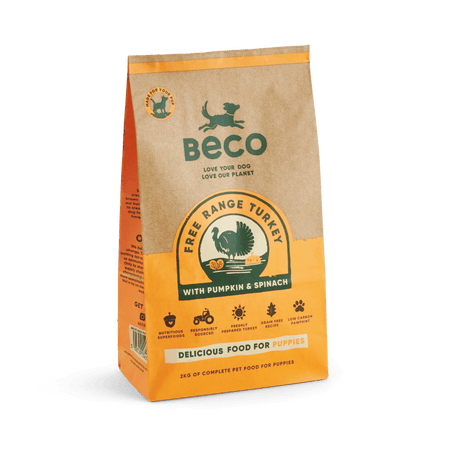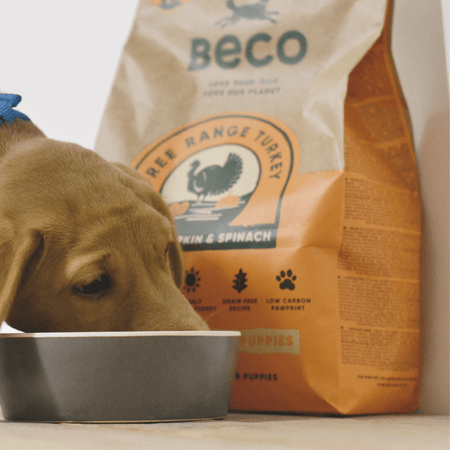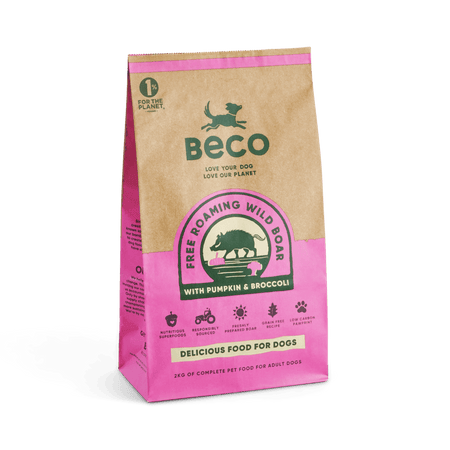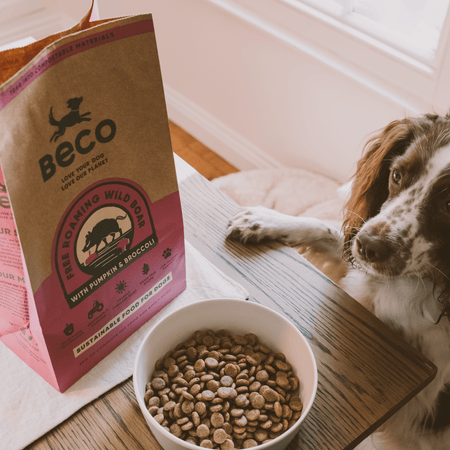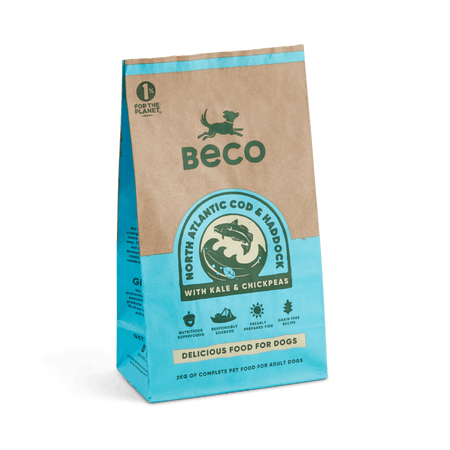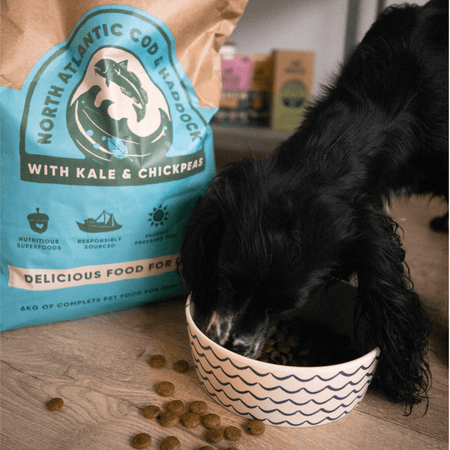Dinner time - when eyes light up and tails wag frantically. Alongside walks, it’s one of the most exciting times of the day for our four-legged friends. And, as we all know, they’ll happily guzzle up whatever we put in front of them.
Dogs rarely turn their nose up at food. But there are some types out there that disagree with them. Your dog may be showing signs of a sensitive stomach, or itching a lot more than usual. It’s our job as owners to find out what the issue is and and find suitable alternatives - because our dogs deserve good food.
If your dog is unwell, or you notice something isn’t right, a trip to the vets is always a good place to start. It may well be down to what they eat, and a change of diet could be on the cards.
Hypoallergenic dog food
The answer to your dog’s allergy may lie in hypoallergenic dog food - food for dogs allergic to normal food. It’s made from a long list of wholesome and nutritious ingredients that you don’t always find in your standard bag. There isn’t a definitive list of things you can or can’t include in this type of dog food, but it’s generally void of any preservatives, chemicals or artificial colours.
How does it work?
Hypoallergenic dog food is all about eliminating the risk of allergies and intolerances. It uses unique proteins that aren’t recognised by your dog’s antibodies as being antigens, eliminating - or at least minimising - the risk of your dog suffering from an allergy.
How do I know if my dog needs hypoallergenic food?
Spotting a dog allergy is simple; diagnosing it isn’t quite as easy. There are some tell-tale signs that us pet parents need to look out. If your dog is displaying any of these, then they may have an allergy:
Excessive scratching
Dandruff, dry skin or a flat coat
Gastrointestinal problems: diarrhoea, vomiting, wind, bloating
Loss of appetite, uninterested in food
What to do if you think your dog has an allergy?
Before you do anything, it’s always a good idea to consult your vet. They might be able to tell you exactly what’s up with your pup and recommend the next steps.
Unfortunately, however, there isn’t a go-to test out there that determines whether your dog has an allergy; instead, vets are encouraging owners to adopt ‘elimination diets’ - specifically designed to isolate any potential allergens.
An elimination diet must not contain any ingredients found in their old food. Classic commercial ingredients, like corn, wheat, soy, milk, eggs and beef, are found in most normal bags. So, it’s not as simple as changing food brands.
Vets advise that elimination diets contain a ‘novel’ protein, which just means a different type of meat not commonly found in normal food, like venison, duck or even wild boar. This should be paired alongside a nutritious novel carbohydrate, like rice or potato.
The elimination diet should last around three months, and in that time, owners must resist the urge to give dogs treats and other foods - after all, a diet is a diet. After three months, you can begin to slowly reintroduce your dog to each normal ingredient, one at a time. This means you can identify the exact ingredient that triggers your dog’s allergy.
But you don’t always have to go back. If your dog is enjoying their new diet and showing no signs of allergies or intolerances, then it might be a good idea to stick with it. As long as the elimination diet is well-balanced and provides your dog with all the energy they need, you may have found their ideal dinner.
Whats the difference between allergies and intolerances?
One thing you should bear in mind before changing your dog’s food is identifying whether your dog has an allergy or an intolerance. What’s the difference? To put it simply, allergies are something dogs have since puppyhood, while intolerances are developed.
For example, your dog may be getting on well with a particular recipe, but if they suddenly disagree with it, it can be because they have developed an intolerance. In this case, you can try variations of the same recipes with a couple of varied ingredients, like switching from chicken to fish or boar.
What are the benefits of hypoallergenic dog food?
There are plenty of reasons why switching over to hypoallergenic dog food is a great idea. Aside from the obvious reason, these types of food are carefully created and provide dogs with a perfectly balanced diet - and they also use delicious novel flavours. Here are some other benefits:
Significantly reduce the risk of your dog suffering from a number of different allergies - of course, this is what it’s made to do
Minimise the risk of subsequent health issues, like arthritis, obesity, heart disease, digestive problems and more
Because of the above, you hopefully won’t need to make anywhere near as many trips to the vets - saving you a tonne of money
Now, as with all things dogs, there are plenty of questions surrounding hypoallergenic food. This isn’t unusual and it’s no surprise to see owners taking an interest in what they feed their dogs. To clear up some of these questions, we thought it’d be a good idea to answer them head on.
Is hypoallergenic dog food the same as grain free?

Because grains are a common cause of many dog allergies and intolerances, there are few hypoallergenic foods that contain large proportions of grains - if any at all. While grain free dog food is, of course, void of any grains, it still contains other ingredients that may cause your dog to have an allergic reaction. Grain-free minimises the risk, but they cannot be considered completely hypoallergenic. To find out more about grain-free, take a look at our ultimate guide to grain-free dog food.
Is insect protein dog food hypoallergenic?
Insect protein has gained popularity over recent years thanks to its ease of availability and naturally high protein content per portion of food. Crickets, mealworms and cockroaches have all shown their health credentials in recent times, dietarily speaking, and will only become more commonplace as time goes on.
Protein from insects is hypoallergenic because it doesn’t contain any allergens, making them ideal for a canine diet, and particularly for those dogs who are naturally sensitive to various allergens. Insect-based food is also typically less resource-intensive than other foodstuffs, making it better for the environment. Other health benefits of insect protein for dogs include :
Insect foods are naturally low in calories
They’re also naturally low in fat, too
Insects are typically high in iron, calcium and fibre
What food is best for dogs with itchy skin?
Fish-based diets tick a lot of boxes. They are full of skin-supporting nutrients from the natural fish oil - a similar reason why us humans take cod liver oil supplements. This also means they’re suitable for dogs with food allergies or intolerances, as well as those with dry skin. Most of these recipes are also grain-free.
Things to bear in mind
Now you’ve got a much clearer idea of hypoallergenic dog food, it’s worth pointing out a few things. While these foods are a great way to reduce the risk of allergies, dog owners should understand that it may take time to find the right hypoallergenic dog food for your dog.
Hypoallergenic foods are made from ingredients that are less likely to cause allergies and intolerances, as well as using single proteins. This is to help isolate the ingredient your dog is allergic to if they don’t agree with that particular recipe. In a perfect world your dog won’t be allergic to any of the ingredients. And if they are, it means you know which one to avoid when trying your next recipe.
We offer an extensive range of hypoallergenic dog food, all grain-free and packed full of nutritious value. At Beco, we’re big on balance. That’s why all our food products are carefully crafted to provide dogs with all the essential proteins, carbohydrates and vitamins. Delicious and always dog-friendly. See some of the healthiest dog food options here.

